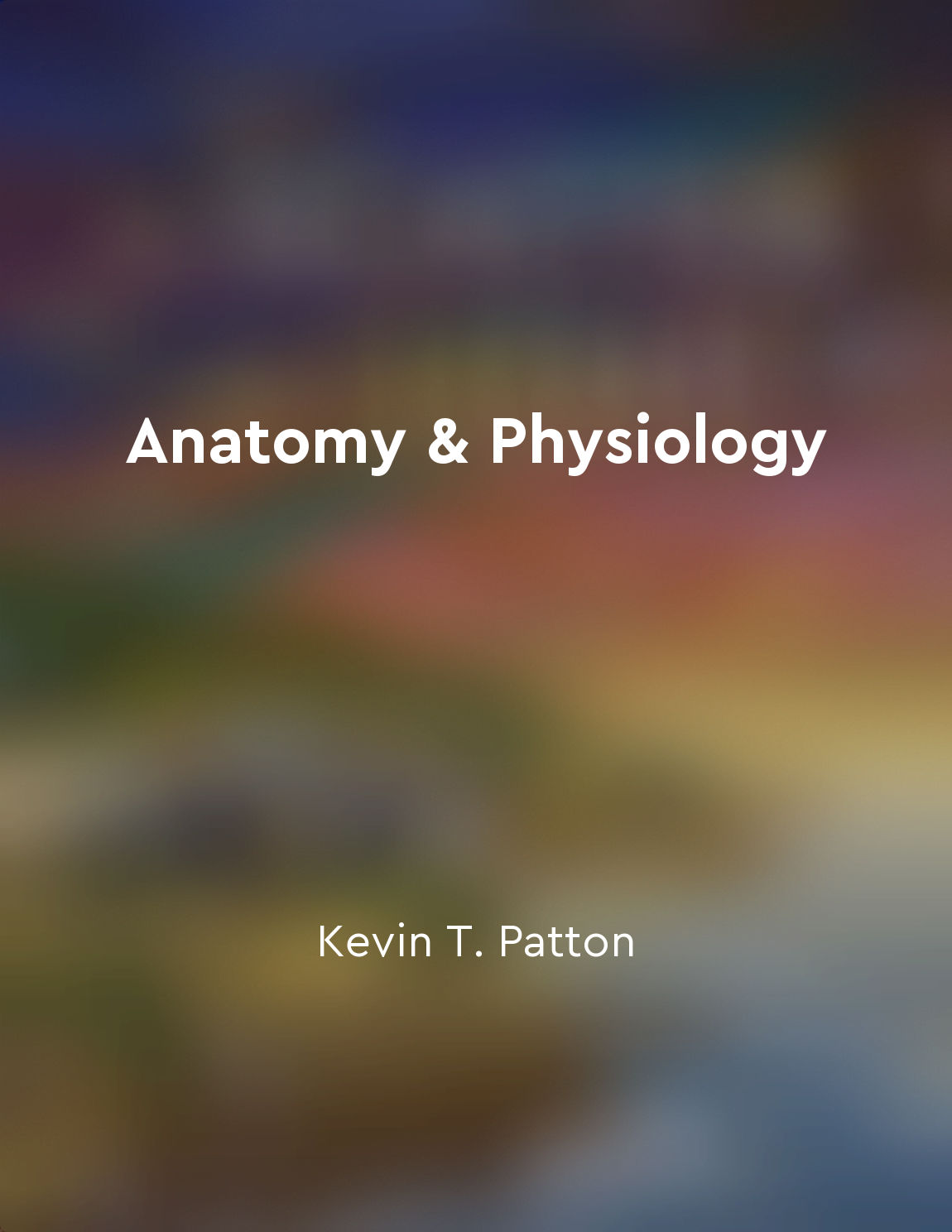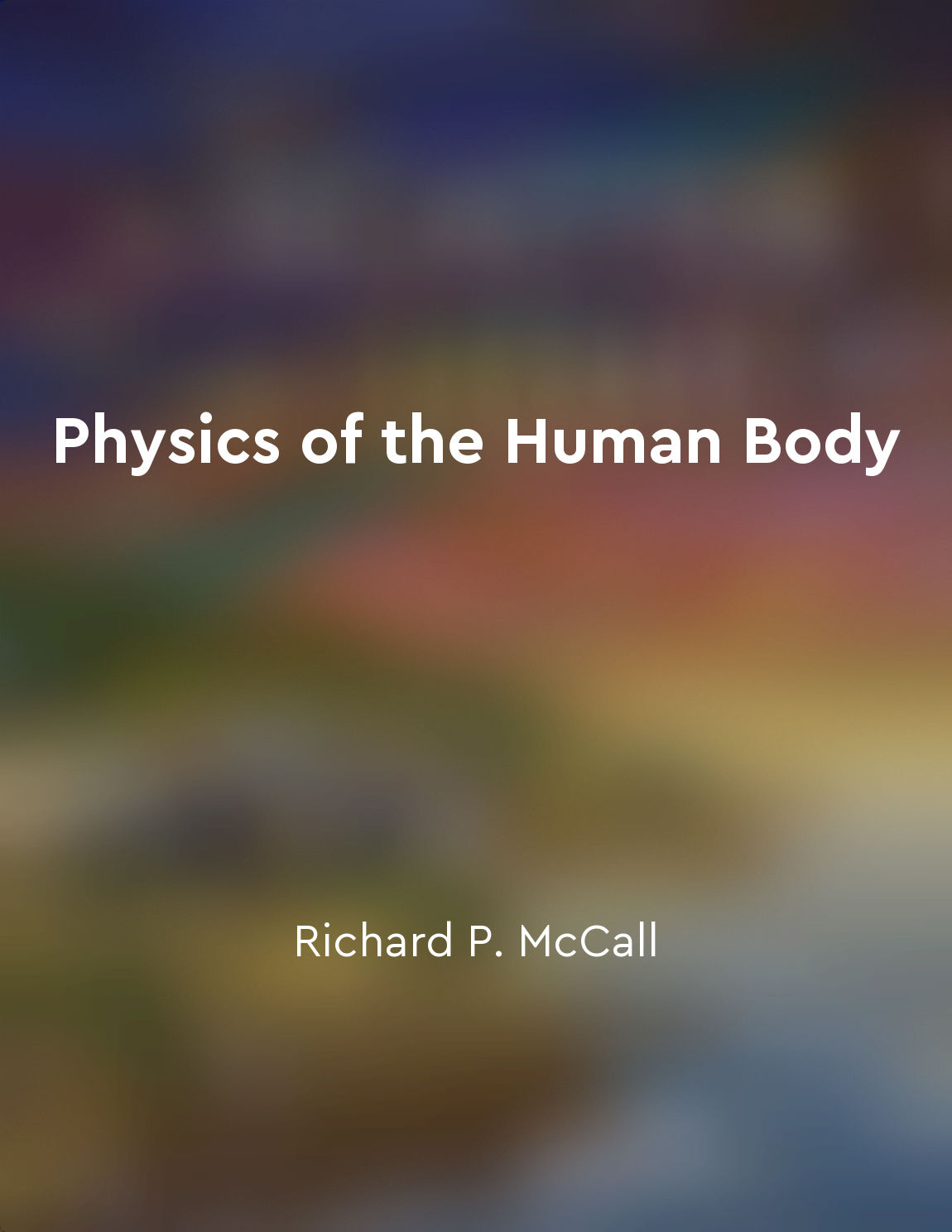Fluid dynamics explains blood flow in the body from "summary" of Physics of the Human Body by Richard P. McCall
Fluid dynamics plays a crucial role in understanding how blood flows through the human body. When we think about blood flow, we often visualize red blood cells moving through our veins and arteries, but there is much more to it than meets the eye. In fact, the movement of blood in our circulatory system can be explained and predicted using the principles of fluid dynamics. One key concept in fluid dynamics is the idea of pressure gradients. Pressure gradients are differences in pressure between two points in a fluid. In the context of blood flow, pressure gradients are responsible for driving the movement of blood from areas of high pressure to areas of low pressure. This is why our heart, which acts as a pump, is essential for maintaining the pressure differences needed to keep blood flowing throughout our bodies. Another important aspect of fluid dynamics that applies to blood flow is the concept of viscosity. Viscosity is a measure of a fluid's resistance to flow. Blood is a non-Newtonian fluid, which means that its viscosity can change depending on factors such as shear rate and temperature. Understanding how changes in viscosity affect blood flow is crucial for diagnosing and treating conditions such as anemia or clotting disorders. In addition to pressure gradients and viscosity, fluid dynamics also helps explain phenomena such as turbulence and laminar flow in blood vessels. Turbulence occurs when blood flow becomes chaotic, often due to obstructions or irregularities in the blood vessels. Laminar flow, on the other hand, is a smooth, orderly flow of blood that is essential for efficient nutrient and oxygen delivery to our tissues.- Researchers and healthcare professionals can gain valuable insights into the workings of our circulatory system. This knowledge has far-reaching implications for fields such as cardiology, hematology, and vascular biology, allowing us to better understand and treat conditions ranging from heart disease to stroke. In essence, fluid dynamics provides a powerful framework for unraveling the mysteries of blood flow in the human body.
Similar Posts

Ankle joint allows for plantarflexion and dorsiflexion
The ankle joint is a synovial hinge joint that allows for movement in the sagittal plane. It is formed by the articulation of t...
Flow promotes a sense of accomplishment
Flow occurs when individuals are fully immersed in an activity that challenges them just enough to stretch their skills and abi...

The urinary system filters waste from the blood
The urinary system is responsible for filtering waste from the blood. This is a crucial function that helps maintain the body's...
Gene expression is regulated by transcription and translation
The process of gene expression is crucial for the functioning of living organisms. It involves the transcription of genetic inf...

Technology has revolutionized the way we conduct scientific research
The advent of technology has brought about a significant transformation in the field of scientific research. In the past, scien...
Polymers are large molecules made up of repeating units
Polymers are fascinating molecules that are composed of repeating units known as monomers. These monomers link together to form...
Flow can be cultivated through practice and mindfulness
The idea that flow can be cultivated through practice and mindfulness is a central theme in the book. By engaging in activities...
Taylor series and Maclaurin series
The Taylor series of a function f(x) is an infinite series that represents the function as a sum of its derivatives evaluated a...
Flow can bring a sense of purpose and meaning
When we experience flow, we enter a state of heightened focus and deep involvement in an activity. In this state, we are fully ...
Creativity and innovation drive advancements in mechanical engineering
The field of mechanical engineering is propelled forward by the constant pursuit of creativity and innovation. It is through th...


